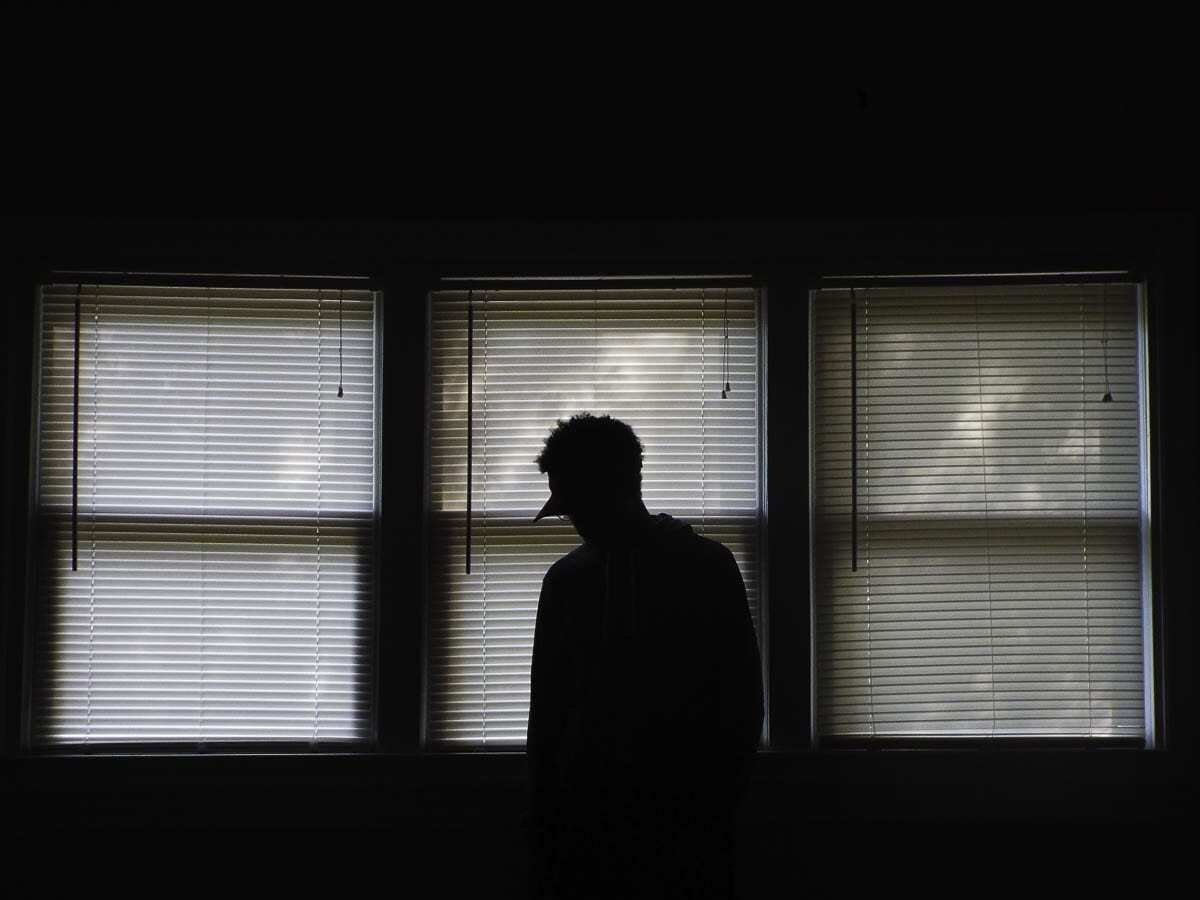Clark County resources for providing hope to families and young people
CLARK COUNTY — Many aspects of the methods have changed over time, but the the core of suicide prevention, particularly in young people, remains the same: show them they’re not alone; show them they have value.
With the rise of comparison culture through social media and the normal day-to-day process of learning maturity, youth struggling with depression, anxiety and self-harm have increased in recent years.

According to the National Health Foundation and Center for Disease Control and Prevention (CDC), Washington state saw 11.4 suicides per 100,000 teens in 2016. In 2020, that rate increased to 15.7 per 100,000. This equates to thousands more youth deaths to suicide.
Factor in potential feelings of isolation due to the pandemic, and it may start to feel like an epidemic of hopelessness is occurring, but this is not necessarily true.
Thankfully, at least Clark County may not be experiencing an equal portion of this increase. According to the Clark County Sheriff’s Office, the agency responded to 775 suicide-specific calls in 2018, 858 in 2019 and 810 in 2020. In the world of statistics, this is seen as nominal change, and certainly not a concerning upward trend.
Even so, the heart-wrenching experience is still experienced by all-too-many families and friends on a regular basis. In September 2020, Heather and John Wendling of Ridgefield were one such family; after losing their 13-year-old daughter London to suicide.
“I don’t think we missed any signs. I was always very open with her talking about mental health,” Heather said in an interview on The Doctors talk show. “I was constantly asking her if she was okay, and how is she doing with the isolation from her friends and also the Zoom learning. She just hid it.”
While the Wendling family has expressed their belief that school closures were a factor in their daughters mental decline, it is important to note the old adage that correlation does not imply causation. What many mental health professionals say is more likely is that the effects of the pandemic on youth are more compounding than initiating harmful thinking and behavior.
In response to this, many resources for both young people and their families have increased robustness in recent months, and if nothing else striven to become more accessible.
Bonnie Roggenkamp worked for a decade as a school counselor at Prairie High School in Battle Ground, and now works in the same role at River HomeLink High School. While she agreed that even parents who are putting genuine effort into talking with their youth are shocked by suicide, there is always important things to look for and do to encourage and support.
Roggenkamp explained how educators are trained to look for signs that a student may not be doing well with their mental and emotional health. Early on in the pandemic, there were many challenges with navigating the transition to online school, but in the fall she said new and improved vigor and planning made a difference in helping students succeed.
“Last spring, we felt like we were just losing kids,” Roggenkamp said. “They were becoming kind of unengaged, and disconnecting and like it really didn’t matter. But what happened in the Fall, I’ve seen drastic improvement. I feel like the teachers as well as the counselors, we had plans, we kind of rolled up our sleeves and said, ‘This is continuing, and we’ve got to figure out how to help these students get engaged. I still saw concern with engagement, but I also saw a great response from staff.”

In one instance, Roggenkamp explained how one teacher she worked with was actually able to notice the signs of a student struggling mentally before the parent. In that case, the teacher was able to connect with her, the student and the parent and help the student feel listened to, seen and encouraged.
Oftentimes, she said it is the lack of engagement, blank stares and body language. While it’s fairly difficult to analyze body language via Zoom call, she said, there is still a lot that can be communicated. At River HomeLink, Roggenkamp explained how they had started a gift bag program where they would actually visit students safely and reaffirm their support for them during remote learning.
“A lot of it too, is helping students break up the monotony of being home, and being bored,” she said. “Teachers, I’ve seen some really creative ways of stepping up, I’ve seen them reach out and contact the home and make sure the student’s doing well. Our staff has been trained by our admin way back in the Fall on signs to look for during Zoom calls, or email messages of concern … and we’ve been able to get resources to them.”
Roggenkamp admits that the students at River HomeLink are often more used to being independent then full-time public school students who have had to adjust to remote learning for the first time. She also said she understands the difficulty faced by working parents to be richly involved in their child’s at-home schoolwork.
“Parent partnership is a key role,” she said. “When I get on Zoom calls, a lot of times the parents are right there and a lot of times when the student says, ‘I got this done, this done and this done,’ the parent’s say ‘Yeah, but you’re going to work on this and this, remember?’ The parent knows what the students homework is.”
The community side
On the community side, Anson Service is the director of Adventure Psychological Services in Hazel Dell, and currently about half of those he counsels are young people. He says from many he speaks with, the consistent issue is trouble with online or hybrid school.
Service explained that many times students are coming to him anxious or depressed and citing being behind on assignments as a leading cause. While he admits many of these are cases of students needing someone to vent to, he’s seen enough of a trend that he says it concerns him.
“They’re saying, ‘I have teachers who struggle to use the class time meaningfully,” Service said. “And not only that, but they’re dealing with a digital system. Now, that is, for a lot of them, very restrictive, and it doesn’t allow them any autonomy. A lot of these teenagers in high school or in middle school are dealing with a system that you can’t move on to the next assignment until you complete an assignment from before. They want to get their current assignments done, but can’t because they missed one from, you know, January 3.”
To help combat this and prevent further backsliding among students, Service encourages parents to, like Roggenkamp, be as involved as they can possibly be while also having grace. In some cases, he said, he’s seen students who are punished for their lack of success in school by having their phones taken away. This sometimes reduces further the amount of social interaction they have if they aren’t leaving home much during the pandemic, he said.
Service also explained that he has spoken with some teachers about the challenges they faced with student engagement during remote learning. He said his hope is that when this happens a pattern of assignment-driven learning would not develop.
“I’ve talked with some teachers and they’re suggesting that they are as caught off guard in this as anybody else,” he said. “None of the students want to actually show their faces, most of them have their microphones muted. So that’s tough for them. They are like, ‘Alright, well, how about we just get straight to the assignment, read the paper and do this thing. Then they get into this pattern of doing that back and forth.”
In addition to being involved, Service encourages parents to ask their children questions, but also not over react if the answers are startling or worrisome. Many times this will prevent the child from talking more, he said.
One warning sign Service mentioned, was that sometimes an uptick in demeanor and a more relaxed attitude can mean the student has made the decision to end their life. For them, he said, it is a way out of the pain so they feel more at ease briefly. He also explained that feelings of loneliness, which are the largest contributor to suicide, are exacerbated by drug or alcohol use.
Resources like those offered by Roggenkamp and Service can be found at nearly all the schools in Clark County, and there is a team of counselors at Adventure Psychological Services to serve a large number of patients.
In addition, there are many community resources listed below to help parents or young people who may be facing a difficult time and struggles with mental health or suicide.
Suicide Prevention Lifeline:
- 1-(800) 273-8255
- Suicidepreventionlifeline.org
Crisis Text Line:
- Text “ACT” to 741741
Clark County Mental Health Crisis Line:
- 1-(800) 626-8137
- (360) 696-9560
Youth Mobile Crisis Intervention:
- (960) 947-1006




